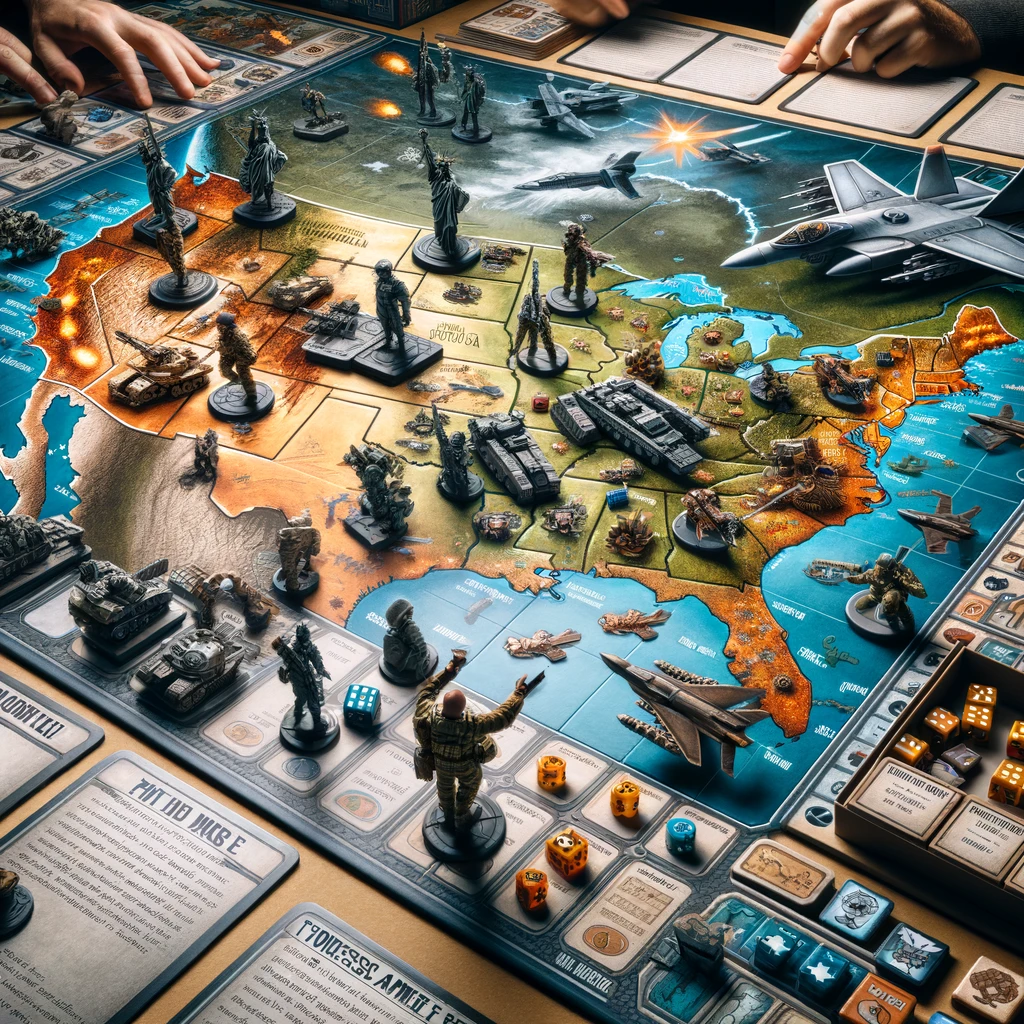
Milton Bradley’s “Fortress America” is a classic example of a board game that not only entertains but also provokes thought about strategy, defense, and geopolitics. Released in 1986, during the height of the Cold War, the game is set in a dystopian future where the United States faces an invasion on three fronts from Asian, European, and Central American foes. This scenario taps into the era’s anxieties and strategic speculations, making it a fascinating study of its time.
The game’s premise is straightforward yet compelling: one player defends the United States, while up to three others command the invading forces. The goal for the invaders is to capture a certain number of cities within the U.S., whereas the American player must fend off the attackers until they can reinforce their position or exhaust the invaders. What makes “Fortress America” particularly engaging is its asymmetry. The U.S. player might seem to have a disadvantage at first, managing multiple fronts alone, but they possess an array of defensive bonuses and advanced technologies that balance the scales, including laser towers and partisans.
Strategic depth in “Fortress America” is considerable. Each side must manage their resources and troops efficiently, deciding where to attack, defend, and when to conserve forces for a later push. The invaders, while initially more powerful, must maintain momentum as their reinforcements are more limited than those of the U.S. player, who gains new units through card draws that symbolize patriotic mobilization and technological breakthroughs. This mechanic adds a layer of unpredictability and excitement to the game, keeping all players on their toes.
Visually, the game impresses with its detailed map of the United States and various plastic miniatures representing different military units such as tanks, infantry, and bombers. The components not only serve the gameplay but also enhance the thematic feel of the game, making players feel as if they are truly commanding vast armies over a sprawling battlefield.
Beyond its gameplay and components, “Fortress America” also serves as a cultural artifact. It reflects the 1980s American mindset of a nation that perceived itself as a global bastion of freedom and democracy under threat. The game can be seen as both a product of its time and a reflection of American cultural attitudes towards both real and hypothetical military conflicts. This aspect of the game provides an additional layer for discussion among players and historians alike, offering insights into the ways games interpret and influence societal views and fears.
However, like many games of its era, “Fortress America” has faced criticism over the years. Some argue that its portrayal of invaders and simplistic geopolitical dynamics might reinforce stereotypes or oversimplify complex international relations. Yet, for many, these elements are also what make the game an intriguing escape into a fictional scenario, allowing players to wrestle with strategies and outcomes that are thankfully confined to the realm of board game warfare.
In conclusion, Milton Bradley’s “Fortress America” is more than just a game. It is a blend of strategy, speculative future warfare, and a snapshot of historical and cultural perspectives from the late 20th century. For those interested in board games as a medium that can both entertain and educate, “Fortress America” offers a rich, engaging experience that continues to be relevant for gaming enthusiasts and collectors today.
Illustration of the board game setup for ‘Fortress America’ by Milton Bradley. The image captures the strategic depth and thematic elements of the game.